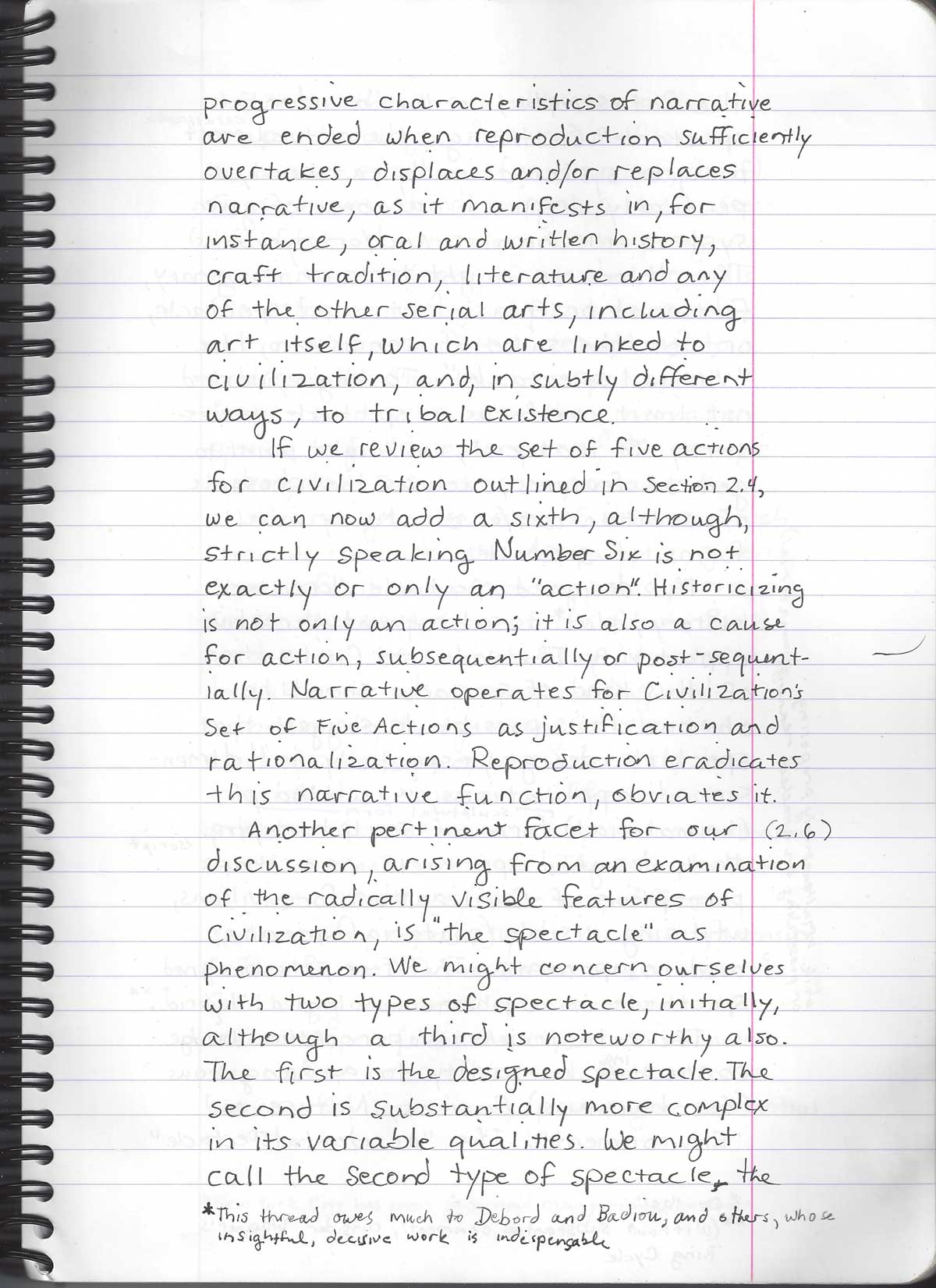Progressive characteristics of narrative are ended when reproduction sufficiently overtakes, displaces and/or replaces narrative, as it manifests in, for instance, oral and written history, craft tradition, literature and any of the other serial arts, including art itself, which are linked to civilization, and, in subtly different ways, to tribal existence.
If we review the set of five actions for civilization outlined in Section 2.4, we can now add a sixth, although, strictly speaking Number Six is not exactly or only an “action.” Historicizing is not only an action; it is also a cause for action, sub-sequentially or post-sequentially. Narrative operates for Civilization’s Set of Five Actions as justification and rationalization. Reproduction eradicates this narrative function, obviates it.
[2.6]
Another pertinent facet for our discussion, arising from an examination of the radically visible features of the Civilization, is “the spectacle” as phenomenon. We might concern ourselves with two types of spectacle, initially, although a third is noteworthy also. The first is the designed spectacle. The second is substantially more complex in its variable qualities. We might call the second type of spectacle the
